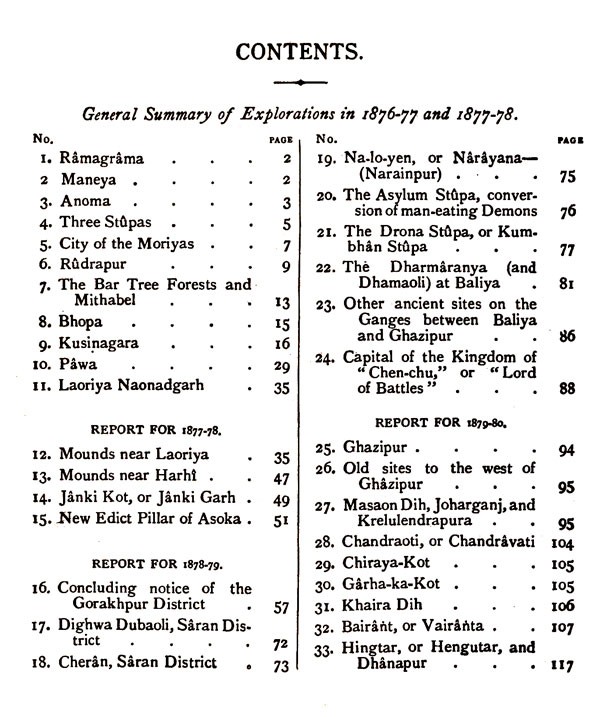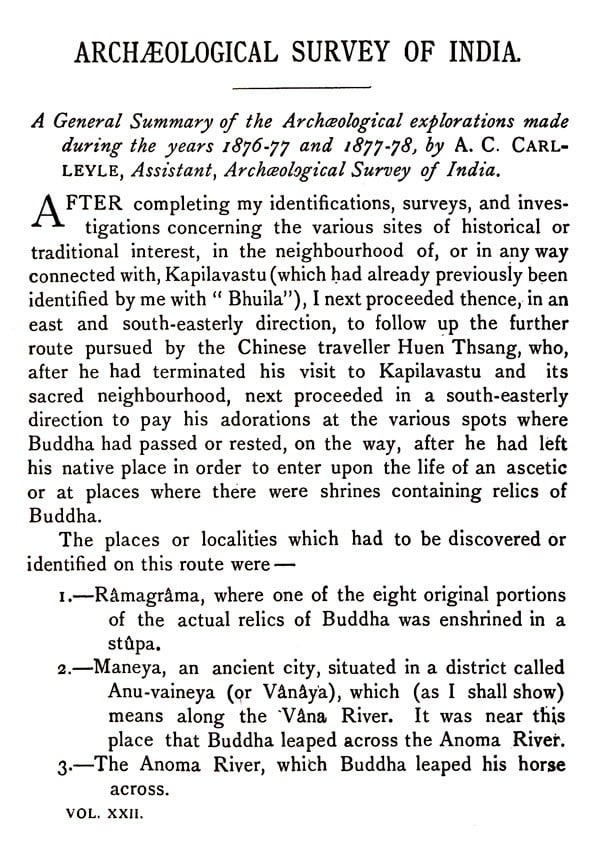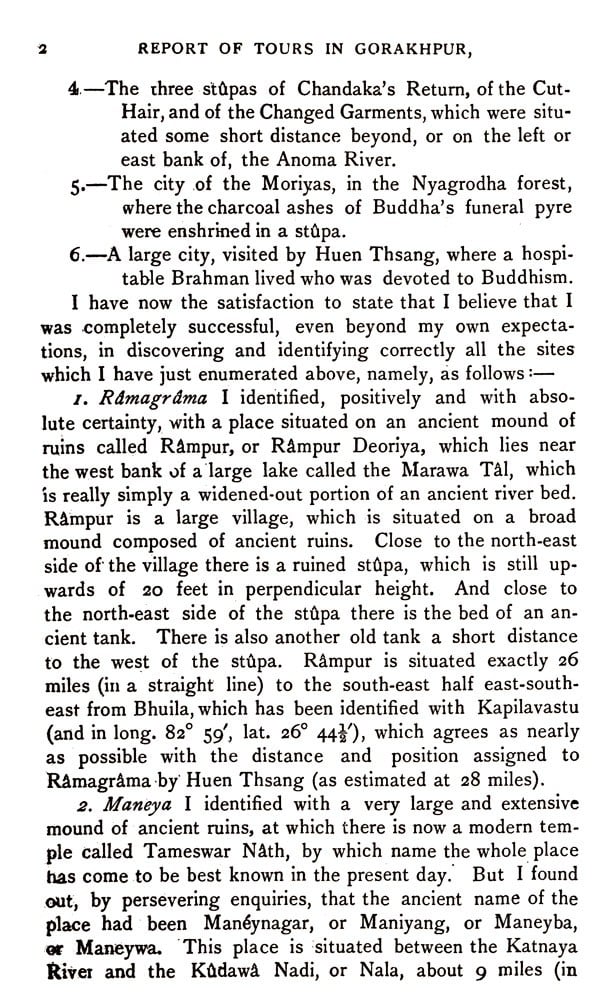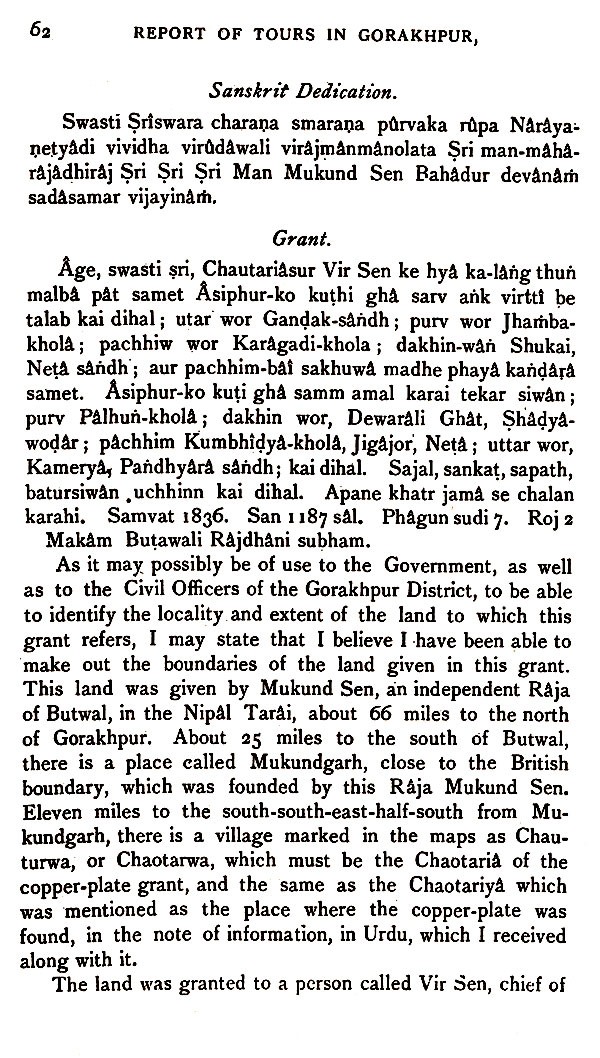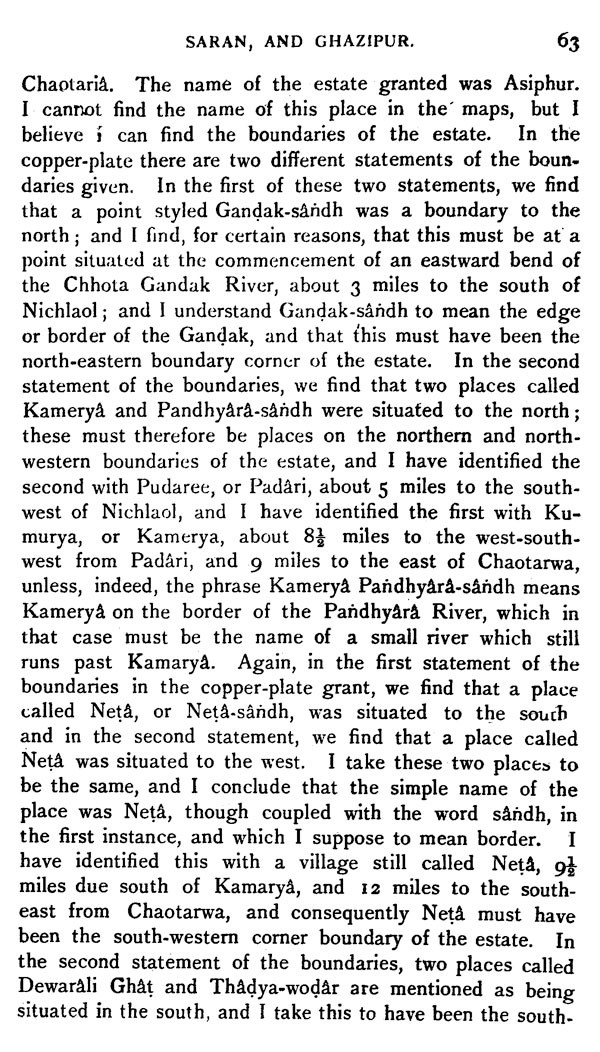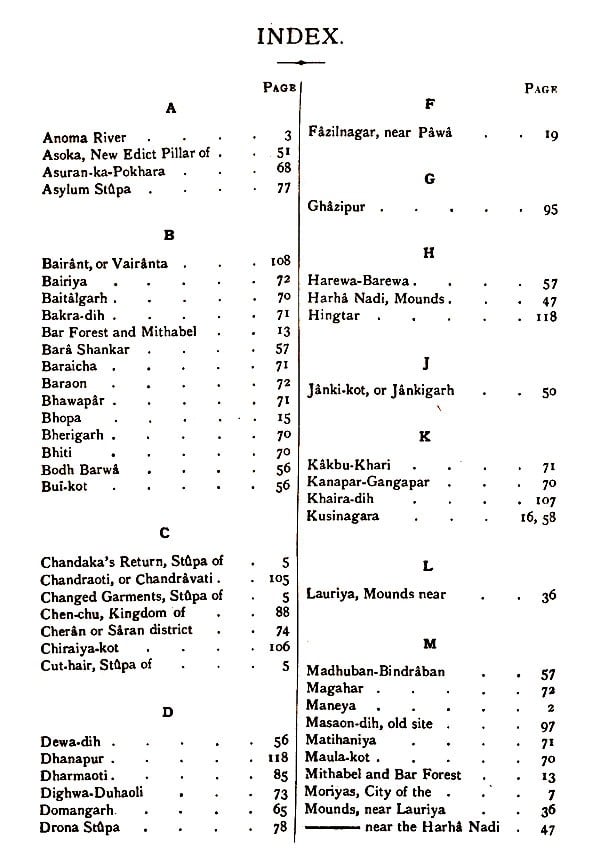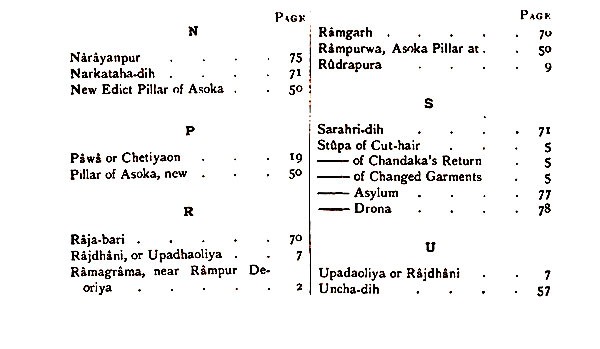
ASI Report of Tours in Gorakhpur, Saran, and Ghazipur in 1877- 78- 79 and 80 (Volume – XXII)
Book Specification
| Item Code: | AZA497 |
| Author: | A.C.L. Carlleyle |
| Publisher: | Archaeological Survey of India |
| Language: | English |
| Edition: | 2000 |
| Pages: | 152 (Throughout B/W Illustraitons) |
| Cover: | HARDCOVER |
| Other Details | 9.5 x 6.5 inches |
| Weight | 510 gm |
Book Description
IN this volume Mr. Carlleyle has followed up his discovery of 1 the site of Kapilavastu, the birth-place of Buddha, by the identification of several other important sites in the early history of Buddhism. Amongst these is Râmnagar, the site of the famous Stûpa of Råmagráma, from which the Nâgas are said to have filched the tooth of Buddha, that is now believed to be preserved in Ceylon. Other identifications, which appear to me to be certain, are the following:
1. The “Anomâ River," over which Prince Sâkya Sinha leaped his horse Chandaka, with the Kúdawá Nala, or “ Leaped River.”
2. The three Stûpas of "Chandaka's Return,” the.“ Cut Hair,” and the “Changed Garments," with three mounds in the neighbourhood of the river.
3. The “ City of the Moriyas” with the ruins of “Raj dhâni,” an old site in the midst of the jungle to the south of Gorakhpur.
4. Discovery of the colossal statue of Buddha after the Nirvâna, at Kasia (the ancient Kusinagara), with an inscription on its pedestal of the Gupta period. This statue must therefore be the identical one that was seen by the Chinese pilgrim in January, A.D. 637, when he visited the scene of Buddha's death. The statue was found in an oblong chamber, which had originally been covered with bricks placed edge to edge after the old fashion of the Hindu arch. The Gupta characters of the inscription show that this style of arch was in use as early as the 4th or 5th century A.D.
5. Discovery of another inscribed pillar of Asoka at Râm purwa in the Tarai, at the foot of the Nepal hills, 32 miles to the north of Betiya. The inscription is letter for letter, the same as that on the two pillars near Betiya. It is now lying prostrate with part of the inscription under water. In its fall the capital was broken, and only the lower part of the bell was found attached to the shaft. This portion had been preserved by a massive copper bolt, by which the capital was attached to the shaft. The bolt is of cast copper, 241 inches in length, 131 inches in circumference in the middle, and 103 inches at each end. There are several marks chiselled and dotted on each flat end of the bolt.
**Contents and Sample Pages**
